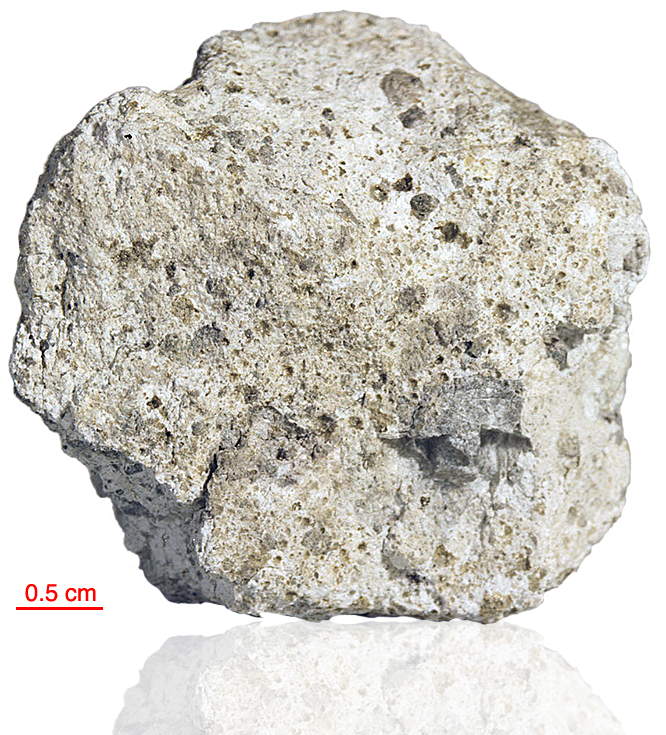
Fact sheet
67605 is a relatively large, friable white particle picked out of the soil sample from the rim of North Ray Crater. It is about the size, shape and colour of a golf ball and is a fragmental breccia with many plagioclase and plagioclase-rich breccia clasts (rotation 2), as well as opaque aphanitic impact melt debris (see rotation 1). Accessory amounts of metallic iron are present.
The sample weighed 44.5 grams before analysis and has not been dated.
Further details of this and other Apollo samples are here: http://curator.jsc.nasa.gov/lunar/
The thin section is slightly thick.
The Apollo 16 landing site was in the hilly region around Descartes crater in the lunar highlands. The landing spot was chosen to allow the astronauts to gather geologically older lunar material (Descartes Formation and the Cayley Formation) than the samples obtained in the first four landings, which were in or near lunar maria.
The mission lasted 11.1 days, with a stay on the lunar surface of 71 hours. The crew were on the lunar surface for 20.2 hours during which they traversed approximately 27 kilometers and collected approximately 96 kilograms of samples.
Apollo 16 was launched on 16 April 1972.






